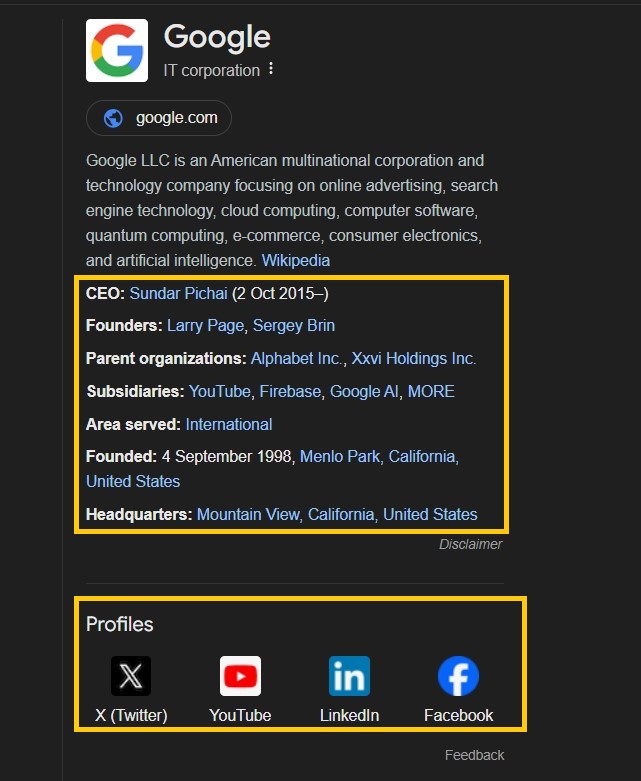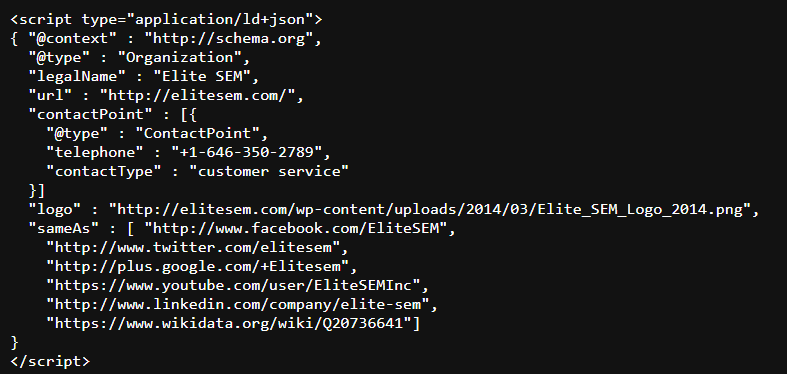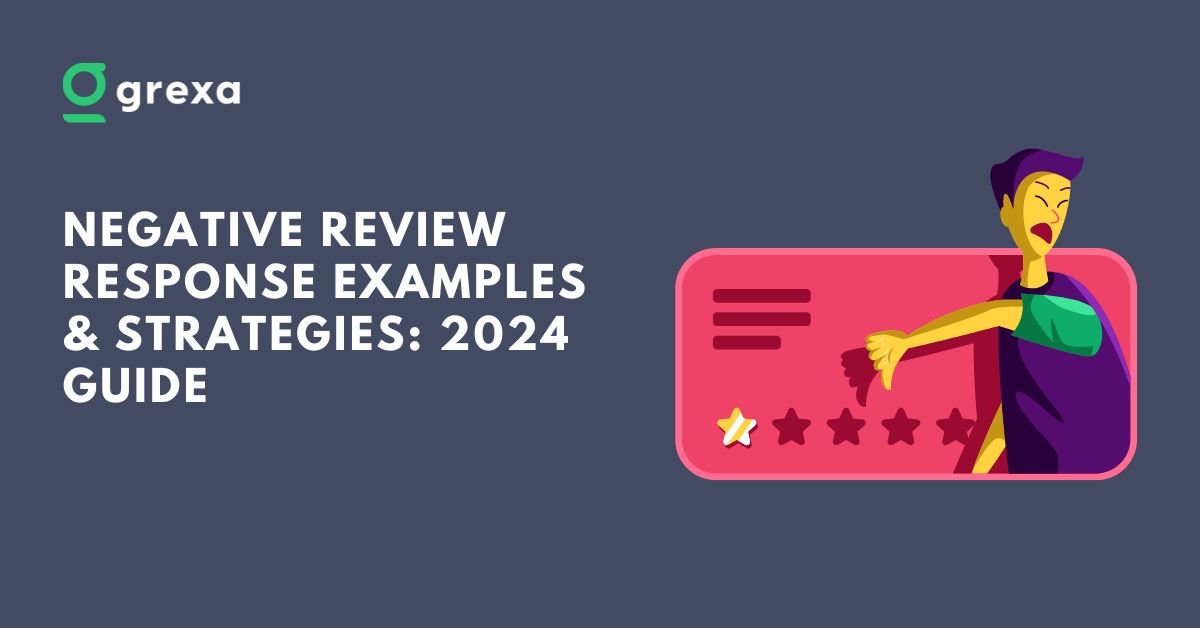Table of Contents
In today’s age of the internet and instant search results, local businesses need to compete on different levels. Standing out in local search results is crucial for success. This comprehensive guide will delve into the key local SEO ranking factors that can propel your business to the top of search engine results pages (SERPs).

Introduction to Local Search Engine Rankings
Local SEO factors are a game-changer for businesses targeting nearby customers and enhancing your reputation. Unlike traditional SEO, local SEO focuses on promoting your products and services to local leads in real-time. It’s about being visible when it matters most.
As a novice or even an experienced business owner’s first question would be; Why do local SEO factors matter? Simple. When people search for local businesses, they’re often ready to buy. A recent Google study found that 76% of people who conduct a local search on their smartphone visit a business within 24 hours. That’s a massive opportunity you can’t afford to miss.
Local SEO ranking factors differs from general SEO in several ways:
- Geographical focus
- Google Business Profile optimization
- Local link building
- Citation management
Understanding these differences is key to mastering local search ranking factors. Let’s dive deeper into each factor that influences your local SEO success.
Google Business Profile (GBP): The Foundation of Local SEO
Your Google Business Profile is the cornerstone of your local SEO factors. It’s often the first thing potential customers see when searching for local businesses. Here’s how to make it shine:
- Claim and verify your listing
- Provide accurate and complete information
- Choose the right business categories
- Add high-quality photos and videos
- Regularly post updates and offers
Remember, consistency is key. Ensure your business name, address, and phone number (NAP) match across all online platforms. This consistency signals credibility to search engines and customers alike.
But don’t stop there. Leverage GBP features to stand out:
- Use Q&A to address common customer queries
- Encourage and respond to reviews
- Add products or services directly to your profile
These actions not only improve your local SEO ranking factors but also enhance user experience. A well-optimized GBP can significantly boost your visibility in local search results.
On-Page Optimization for Local Search Success
On-page optimization is a crucial part of local search factors. It helps search engines understand your business and its relevance to local searches. By applying the following strategies, you can have an optimized on-page.
- Craft locally-optimized title tags and meta descriptions
- Incorporate location-specific keywords in headers and content
- Create and optimize location landing pages
- Implement local business schema markup
- Ensure mobile optimization
Let’s dive into this list thoroughly.
Title Tags and Meta Descriptions
Title tags and meta descriptions are the first thing viewers see when they search for your website. It is one of the major local SEO ranking factors. Titles and meta descriptions often become the deciding factor for viewers, whether to visit or not.
Your title tag should include your primary keyword and location. For example: “Best Pizza in New York | Joe’s Pizzeria”. Keep it under 60 characters for optimal display in search results.
Meta descriptions should be compelling and include your location and key offerings. Aim for 155-160 characters. For instance: “Craving authentic New York-style pizza? Joe’s Pizzeria offers the best slices in Manhattan. Visit us for dine-in, takeout, or delivery today!”
Location-Specific Keywords
Incorporating location-specific keywords naturally throughout your content will enhance your local search factors. This includes your city, neighborhood, and even nearby landmarks. But remember, readability comes first. Don’t sacrifice quality for keyword density.
Location Landing Pages
Location landing pages serve as an important player in Google local ranking factors. If you serve multiple areas, creating individual landing pages for each location is a must. These pages should include:
- Unique, location-specific content
- Local address and phone number
- Embedded Google Map
- Customer testimonials from that area
- Information about local events or sponsorships
Schema Markup
Schema markup helps search engines understand your content better. For local businesses, Local Business schema is particularly important. It provides structured data about your business, including:
- Business name
- Address
- Phone number
- Opening hours
- Reviews
Implementing schema correctly can boost your visibility in local search results and potentially earn you rich snippets.


Implementing schema correctly can boost your visibility in local search results and potentially earn you rich snippets.
Mobile Optimization
With most local searches happening on mobile devices, mobile optimization is crucial. Ensure your website is responsive, loads quickly, and provides a seamless user experience on all devices. Compromising in mobile optimization can adversely affect your other local search factors.
The Power of Reviews in Local SEO Ranking Factors
Managing reviews are a major contributor in improving your local SEO ranking factors. They influence not only search rankings but also customer decisions. Here’s why reviews matter and how to leverage them:
- Quantity: More reviews signal popularity
- Quality: High ratings boost credibility
- Recency: Fresh reviews show relevance
- Keywords: Reviews containing keywords can improve rankings
To harness the power of reviews:
- Encourage satisfied customers to leave reviews
- Respond to all reviews, both positive and negative
- Address concerns raised in negative reviews
- Share positive reviews on your website and social media
Remember, authenticity is key. Never buy fake reviews or offer incentives for positive reviews. This violates Google’s guidelines and can degrade your local SEO ranking factors. Google reviews are an important part of business and for maintaining the business’s reputation and customer’s satisfaction, you must have a good strategy. We have also prepared a guide for you on how to master google review automation and boost your online presence.

Building a Strong Local Backlink Profile
Backlinks remain a crucial part of local SEO ranking factors. They signal to search engines that your business is credible and relevant. But not all backlinks are created equal. Focus on quality over quantity.
Here’s how to build a strong local backlink profile:
- Seek links from local news sites and blogs
- Sponsor local events or charities
- Join local business associations
- Create valuable, shareable content
- Guest post on relevant local websites
Diversity is key in link building. Aim for a mix of:
- Dofollow and nofollow links
- Different anchor texts
- Various types of linking domains
Remember, relevance matters. A link from a local newspaper is often more valuable than one from a high-authority site unrelated to your business or location.
Citations and Directories: Consistency is Key
Citations are mentions of your business name, address, and phone number (NAP) on other websites. They play a crucial role in local SEO ranking factors. Consistency across these citations is paramount.
Why? Consistent citations signal to search engines that your business information is accurate and trustworthy. This can significantly boost your local search rankings.
Key citation sources include:
- Business directories (e.g., Yelp, Yellow Pages)
- Social media platforms
- Local chambers of commerce
- Industry-specific directories
To manage your citations effectively:
- Audit your existing citations for accuracy
- Clean up duplicate or incorrect listings
- Prioritize top citation sources in your industry
- Regularly monitor and update your citations
Remember, quality trumps quantity. Focus on reputable, relevant directories rather than submitting to every directory you find.
Creating Locally-Relevant Content to Improve Rankings
Content is king in SEO, and local SEO is no exception. Creating locally-relevant content can significantly boost your Google local ranking factors. Here’s how:
- Develop a content strategy focused on local themes
- Incorporate location-specific keywords naturally
- Create content about local events and news
- Use content to target multiple service areas
Some ideas for locally-relevant content:
- Area guides
- Local event roundups
- Interviews with local figures
- Location-specific FAQs
- Community involvement stories
Remember, quality matters. Create content that genuinely helps your local audience. This not only improves your rankings but also establishes your business as a local authority.
Behavioral Signals: User Engagement and Local Rankings
Behavioral signals are important insights to build up your local search factors. It sends strong signals to search engines about the relevance and quality of your business. Key behavioral signals include:
- Click-through rates (CTR)
- Time spent on site
- Bounce rates
- Mobile clicks-to-call
To improve these signals:
- Craft compelling meta titles and descriptions to boost CTR
- Create engaging, valuable content to keep users on your site
- Optimize your site structure for easy navigation
- Ensure your contact information is easily accessible
Remember, the goal is to provide the best possible user experience. This not only improves your local SEO ranking factors but also increases the likelihood of converting visitors into customers.
Social Signals and Their Role in Local SEO Factors
While social signals do not straight up contribute to your Google local ranking factors, they can indirectly influence your local SEO success. A strong social media presence can:
- Increase brand awareness
- Drive traffic to your website
- Improve online engagement
- Boost your citations
To leverage social signals:
- Maintain active profiles on relevant platforms
- Share your content and engage with your audience
- Encourage check-ins and mentions
- Use local hashtags
Remember, consistency is key. Regularly post valuable content and engage with your followers to build a strong local social media presence.
Personalization in Local Search Results
Search engines aim to provide the most relevant results for each user. This means local search results can vary based on:
- User location
- Search history
- Device used
- Personal preferences
To optimize for personalized local search:
- Ensure your business information is accurate and up-to-date
- Target keywords relevant to your local audience
- Create content that addresses local needs and interests
- Optimize for mobile users
Remember, while you can’t control personalization, you can ensure your business is well-positioned to appear in relevant local searches.

Decoding Google’s Local Pack and Map Rankings
The Local Pack (or Map Pack) is a group of three local business listings that appear at the top of Google’s search results for local queries. Ranking in the Local Pack can significantly increase your visibility and traffic. Thus, it can be an important part in improvising your local SEO ranking factors.
Key factors influencing Local Pack rankings include:
- Relevance: How well your business matches the search query
- Distance: Proximity to the searcher’s location
- Prominence: Overall online visibility and reputation
To optimize for the Local Pack:
- Ensure your Google Business Profile is fully optimized
- Garner positive reviews and ratings
- Build citations on relevant platforms
- Create locally-relevant content
Remember, Local Pack rankings can differ from organic rankings. A comprehensive local SEO strategy should target both.
Get The Bigger Picture With Example For Location Specific Keywords
Catering to local people is the main objective of local SEO factors. For getting connected with local viewers, you must use location specific keywords. These keywords are crucial for local SEO as they help your business target customers in specific geographic areas. Here are examples of location-specific keywords across different industries:
Restaurant Industry
- “Italian restaurant in [City]”
- “Best sushi near [Landmark]”
- “Family-friendly restaurants in [Neighborhood]”
Healthcare Industry
- “Dentist in [City]”
- “Pediatrician near [Street Name]”
- “Emergency dental services in [City]”
Real Estate Industry
- “Homes for sale in [Neighborhood]”
- “Real estate agents near [Landmark]”
- “Apartments for rent in [City]”
Service Industry (Plumbing, HVAC, etc.)
- “Plumber near me”
- “AC repair in [City]”
- “Emergency locksmith [Neighborhood]”
Retail Industry
- “Clothing stores in [City]”
- “Electronics store near [Landmark]”
- “Toy shop in [Neighborhood]”
Tourism and Hospitality Industry
- “Hotels near [Tourist Attraction]”
- “Bed and breakfast in [City Center]”
- “Tourist activities in [City]”
Education Industry
- “Tutoring services in [City]”
- “Private schools near [Neighborhood]”
- “Driving schools in [City]”
Legal Industry
- “Personal injury lawyer in [City]”
- “Divorce attorney near [Street Name]”
- “Estate planning lawyer in [Neighborhood]”
Automotive Industry
- “Auto repair shops in [City]”
- “Car dealerships near [Landmark]”
- “Tire shops in [Neighborhood]”
Financial Services Industry
- “Financial advisor in [City]”
- “Bank branches near [Street Name]”
- “Mortgage brokers in [Neighborhood]”
Advanced Local SEO Techniques to Monitor Rankings
Monitoring your local SEO performance is crucial for ongoing success. Here are some advanced techniques:
- Use tools like SEMrush or Ahrefs to track local keyword rankings
- Set up Google Alerts for your brand and local keywords
- Regularly audit your Google Business Profile insights
- Monitor your competitors’ local SEO strategies
Remember, local SEO is an ongoing process. Regularly review and adjust your strategy based on performance data and industry trends.
Local Search Ads (LSA) Factors: Stand Out From Others
Ever wondered why some particular ads appeared more often than others? Why when two ads having the same type of content and operating in the same location but differ in reaching local viewers? The answer is simple, optimizing the factors that influence your Local Search Ads (LSA). Let’s have a look at the major factors that directly affect your LSA and help you in reaching maximum local customers:
Google My Business (GMB) Optimization
- Complete and Accurate Information: Ensure your Google My Business profile is complete with accurate business name, address, phone number (NAP), website URL, business hours, and categories.
- Reviews and Ratings: Encourage and manage customer reviews and ratings on your GMB profile. Positive reviews can improve your local search ranking and credibility.
Location Targeting
- Geographic Targeting: Set up your Local Search Ads to target specific geographic locations where your potential customers are located or where you provide services.
- Radius Targeting: Use radius targeting to reach users within a certain distance from your business location, ensuring your ads are shown to relevant local audiences.
Keywords and Ad Copy
- Local Keywords: Include local keywords in your ad copy that reflect what users in your target area are searching for. This could include location-specific terms, service areas, or local landmarks.
- Call-to-Action (CTA): Use clear and compelling CTAs in your ad copy to encourage users to take action, such as visiting your store, calling for more information, or making a purchase.
Ad Extensions
- Location Extensions: Enable location extensions in your ads to display your business address, phone number, and a map marker directly within the ad. This increases visibility and makes it easier for users to find and contact your business.
- Call Extensions: Include call extensions so users can call your business directly from the ad, which is particularly useful for mobile users.
Mobile Optimization
- Mobile-Friendly Ads: Ensure your ads are optimized for mobile devices since many users perform local searches on their smartphones. Make sure your landing pages are mobile-friendly as well to provide a seamless user experience.
Local Landing Pages
- Relevance: Create dedicated landing pages for each location or service area you target with your ads. Ensure these pages are optimized with relevant content, local keywords, and contact information.
- Consistency: Maintain consistency between your ad messaging and the content on your landing pages to provide a cohesive user experience.
Tracking and Analytics
- Conversion Tracking: Set up conversion tracking to measure the effectiveness of your Local Search Ads. Track actions such as phone calls, form submissions, or store visits that result from users interacting with your ads.
- Performance Analysis: Use analytics to monitor the performance of your ads, identify trends, and make data-driven optimizations to improve ROI and achieve your advertising goals.
Incorporate these into your strategies and you can enhance your local search factors for reaching more potential customers.
Measuring Success: Track You SEO Efforts
Tracking and analyzing your progress in local SEO ranking factors is the essence of a successful business. It is crucial for aiming to achieve top results in local search engine rankings. Here’s a guide on how to effectively track and optimize for local SEO:
Optimize Google My Business (GMB) Profile
Local SEO ranking factors demands an optimized GMB profile for enhancing your websites visibility
- Complete Profile: Ensure your GMB profile is fully optimized with accurate business information (name, address, phone number), business hours, categories, and a compelling business description.
- Upload Photos: Regularly update high-quality photos of your business, products, and services to enhance visibility and engagement.
Website Optimization
A user-friendly landing page can significantly boost your website’s traffic and customer conversion. It plays a crucial role in enhancing your Google local ranking factors.
- Local Landing Pages: Create dedicated landing pages optimized for local keywords and specific locations you target.
- Mobile Optimization: Ensure your website is mobile-friendly, as many local searches are performed on mobile devices.
Online Reviews and Reputation Management
Reviews can be a deal maker or breaker for your business. Monitoring and managing customers’ reviews is critical for your local SEO ranking factors.
- Review Monitoring: Regularly monitor and respond to customer reviews on platforms like Google, Yelp, and Facebook to improve credibility and engagement.
- Generate Positive Reviews: Encourage satisfied customers to leave reviews and testimonials to enhance your business’s reputation.
Local Backlinks
Tracking backlinks can be confusing and tiresome, you can use:
- Backlink Analysis Tools: Use tools like Ahrefs, Moz, or SEMrush to monitor backlinks to your website.
- Local Directory Links: Track links from local directories, chambers of commerce, and industry-specific local websites.
- Competitor Analysis: Monitor where your competitors are getting backlinks and consider similar opportunities.
Local Citation Management
Consistent information of your business across platforms contributes a lot to your local search factors.
- NAP Consistency: Ensure consistent Name, Address, and Phone Number (NAP) across all online directories, citations, and your website.
- Local Directories: List your business on reputable local directories and citation sites relevant to your industry and location.
Creating Locally-Relevant contents
Creating content that is locally- relevant can be a brain drain. But at the same time, it plays a major role in attracting potential customers and strengthening your Google local ranking factors.
- Define Objectives: Determine what you aim to achieve with your local SEO efforts (e.g., increase website traffic, generate more leads, drive foot traffic to stores).
- Key Performance Indicators (KPIs): Identify metrics to measure success, such as keyword rankings, organic traffic, local pack rankings, conversion rates, and online reviews.
Behavioral Signals
Viewers’ behavior patterns play a crucial role in analyzing the market and forming up strategies for local SEO ranking factors.
- Google Analytics: Use Google Analytics to track user behavior on your website, such as time on site, bounce rate, and pages per session.
- Google Search Console: Review user interaction metrics like click-through rate (CTR) and average position for local queries.
Social Signals
Social signals are one of the tools for reading viewers’ behavior. You can record social signals through:
- Social Media Monitoring Tools: Use tools like Hootsuite, Buffer, or Sprout Social to monitor social engagement (likes, shares, comments) on platforms like Facebook, Twitter, and Instagram.
- Google Analytics: Track referral traffic from social media platforms to your website.
Personalization in Local Search
Having personalized data and using it as keywords can create a great impact on your local search factors. For getting personalized data, you can try using:
- Search History: Use incognito mode or private browsing to check search results without personalization.
- Local SEO Tools: Some tools provide options to simulate searches from different locations or clear browsing history to see non-personalized results.
- Monitor Rankings: Regularly monitor rankings across different locations and compare with personalized and non-personalized search results.
Google’s Local Pack
- Google My Business Insights: Monitor impressions, clicks, and actions (directions requests, phone calls) from the Google My Business dashboard.
- Rank Tracking Tools: Use tools like SEMrush, BrightLocal, or Moz to track your business’s visibility in the local pack for targeted keywords.
- Local Search Queries: Analyze Google Search Console data to track queries that trigger local pack results and monitor changes over time
Local search factors play a crucial role in enhancing your local presence, but it also needs a thorough monitoring and check-up. Ensure that there are no corners left unchecked to reserve your seat at the top of search results.
Suspension Risk Factors You Must Avoid At All Cost

Ranking yourself higher with the help of Google ranking factors can be rewarding to your business, however it can be a slippery slope in case of any overusing. Your business listing can be suspended or penalized if there is an improper management or violation of these local seo factors. Here are some suspension risk factors to be aware of:
Violation of Google My Business (GMB) Guidelines
- Fake or Misleading Information: Providing inaccurate business information, such as incorrect business name, address, phone number (NAP), or misleading descriptions.
- Multiple Listings for the Same Location: Creating multiple GMB listings for the same business location, which can confuse users and violate Google’s guidelines.
Spammy Practices
- Keyword Stuffing: Adding unnecessary keywords or locations in the business name field to manipulate search rankings.
- Fake Reviews: Generating or purchasing fake reviews to inflate ratings and deceive users.
Quality and Relevance Issues
- Poor Website Quality: Having a website that is low quality, outdated, or irrelevant to the business category or services offered.
- Unresponsive Website: A website that doesn’t load properly or is not mobile-friendly can negatively impact user experience.
Ownership and Verification Issues
- Ownership Disputes: Disputes over ownership or control of a GMB listing, especially in cases of multiple owners or franchisees.
- Verification Failures: Failing to verify ownership of a business listing according to Google’s verification guidelines.
User Interaction Issues
- Negative User Behavior: Receiving numerous complaints from users about poor service, fraudulent activity, or unethical business practices.
- Low Engagement: Lack of engagement with user queries or interactions through GMB, such as not responding to reviews or messages promptly.
Legal and Policy Violations
- Regulatory Compliance: Not complying with local business licensing, regulatory requirements, or laws that govern the business category.
- Content Violations: Publishing content (such as images or posts) that violates copyright, privacy, or other legal guidelines.
Algorithmic or Manual Penalties
- Algorithmic Penalties: Being flagged by Google’s algorithms for suspicious activity or violating guidelines, which can lead to a drop in local search rankings or suspension.
- Manual Penalties: Google’s manual review team may apply penalties or suspend a listing if they find significant violations or patterns of abuse.
For staying in this game, you must follow its rules. This same philosophy applies while incorporating Google local ranking factors into your SEO strategies. To avoid suspension and maintain a strong local SEO presence, you should adhere to Google’s guidelines, provide accurate and up-to-date information, deliver quality services, and engage positively with customers.
Future Trends in Local SEO Rankings
The spectrum of local SEO factors is constantly evolving. Stay ahead of the curve by preparing for these trends:
- Voice search optimization
- Artificial Intelligence in local search
- Augmented Reality integration
- Increased emphasis on user experience signals
To future-proof your local SEO strategy:
- Optimize for conversational keywords
- Focus on mobile-first experiences
- Create immersive local content
- Prioritize user experience across all platforms
Remember, adapting to these trends early can give you a significant advantage in local search rankings.
Here at Grexa.ai, we provide the required guide to improve your local SEO and improve your business’s visibility. With the marketing world being continuously evolving, every local business needs a guide to see them through their success. Having a proper strategy keeps you ahead of the competition with the advantage to grab any opportunity that appears. So why just think while your competitors are taking actions, contact us and be ahead.
Negative Factors: Things To Watch For
We have understood all the local search factors that play a crucial role in enhancing your google search ranking. But, an adventure without looking carefully at your steps can be costly. While enhancing positive factors is important, understanding and mitigating negative local search factors is just as crucial. Local SEO aims to improve a business’s visibility in location-based search results, making it essential to navigate potential pitfalls that could hinder success. Here’s a detailed exploration of the negative factors that need careful management:
Inconsistent NAP (Name, Address, Phone Number) Information
One of the foundational aspects of local SEO factors is consistent NAP information across all platforms. Inconsistency in business name spellings, addresses, or phone numbers can confuse search engines and potential customers alike. It’s imperative to ensure uniformity across your website, Google My Business profile, directories, and social media platforms.
Lack of or Incomplete Google My Business (GMB) Profile
Google My Business is a powerful tool for local SEO, providing crucial information to potential customers such as business hours, services offered, and customer reviews. A neglected or incomplete GMB profile can result in lower visibility of your business in local search results. Regular updates and thorough completion of all fields are essential.
Poor Online Reviews and Ratings
Online reviews and ratings not only influence consumer decisions but also impact local SEO rankings. Negative reviews or a low average rating can deter potential customers and signal to search engines that your business may not be the best choice. Actively managing reviews, responding to feedback, and encouraging satisfied customers to leave positive reviews can help mitigate this. You can also incorporate review gating in your strategy for displaying more positive reviews and enhance your local SEO ranking factors.
Lack of Quality Backlinks and Local Citations
Backlinks from reputable websites and local citations (mentions of your business’s NAP on other websites) are crucial for local SEO authority. However, low-quality backlinks or citations from irrelevant or spammy sites can have a negative impact. Focus on acquiring backlinks from local sources and authoritative industry-related websites.
Keyword Stuffing and Poor Content Quality
While keywords are an essential part of local SEO factors, overloading your content with keywords (keyword stuffing) or creating low-quality, thin content can harm rankings. Instead, prioritize creating high-quality, relevant content that addresses the needs and interests of your local audience. Use keywords naturally and provide valuable information to visitors.
Ignoring Mobile Optimization
With an increasing number of searches happening on mobile devices, optimizing your website for mobile users is critical. A slow-loading or poorly optimized mobile site can lead to higher bounce rates and lower search rankings. Ensure your website is responsive, loads quickly on mobile devices, and provides a seamless user experience.
Ignoring Technical Local SEO Factors
Technical SEO issues such as slow page speed, broken links, improper use of schema markup, and lack of SSL certificate can negatively impact local SEO efforts. Conduct regular technical audits of your website and address any issues promptly to ensure optimal performance and user experience.
Failure to Monitor and Adjust Strategy
Local search factors are not a one-time effort but an ongoing process. Failing to monitor analytics, track performance metrics, and adjust your local SEO strategy accordingly can result in stagnation or decline in search rankings over time. Stay informed about algorithm updates and industry trends to adapt your strategy effectively.
Every successful business has multiple hiccups. You might encounter a number of pitfalls while managing your local SEO ranking factors, but by actively managing and mitigating these pitfalls—such as inconsistent NAP information, poor reviews, inadequate mobile optimization, and technical SEO issues—you can enhance your business’s visibility in local search results.
Conclusion: Putting It All Together
Mastering local SEO ranking factors is crucial for business success in today’s digital landscape. From optimizing your Google Business Profile to creating locally-relevant content, each factor plays a vital role in boosting your local search visibility.
Remember, local SEO is not a one-time effort. It requires ongoing optimization and adaptation to changing algorithms and user behaviors. Stay informed, monitor your performance, and continuously refine your strategy. By implementing the strategies outlined in this guide, you’ll be well on your way to improving your local search rankings and attracting more local customers. Start optimizing today and watch your local business thrive.
FAQ
What are the most important local SEO ranking factors?
Key factors include Google Business Profile optimization, on-page SEO, reviews, citations, and locally-relevant content.
How often should I update my Google Business Profile?
Regularly. Post updates at least weekly, respond to reviews promptly, and ensure your information is always accurate.
Can social media impact my local SEO rankings?
While not a direct ranking factor, social media can indirectly boost your local SEO through increased visibility and engagement.
How do I optimize for the Local Pack?
Focus on relevance, distance, and prominence. Optimize your GBP, gather positive reviews, and build quality local citations.
How long does it take to see results from local SEO efforts?
It varies, but typically you can start seeing improvements in 3-6 months. Consistent effort is key for long-term success.



